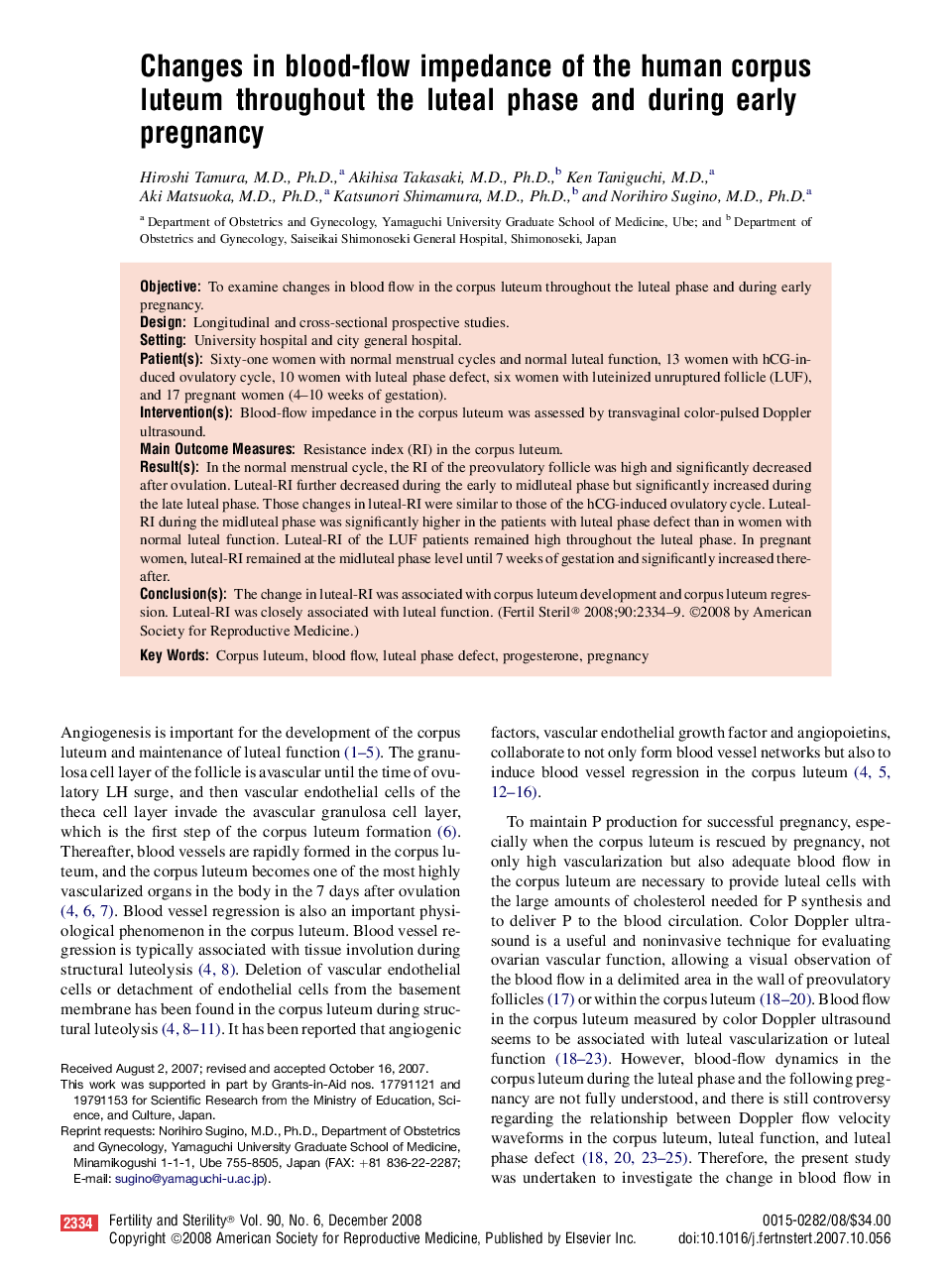| Article ID | Journal | Published Year | Pages | File Type |
|---|---|---|---|---|
| 3937205 | Fertility and Sterility | 2008 | 6 Pages |
ObjectiveTo examine changes in blood flow in the corpus luteum throughout the luteal phase and during early pregnancy.DesignLongitudinal and cross-sectional prospective studies.SettingUniversity hospital and city general hospital.Patient(s)Sixty-one women with normal menstrual cycles and normal luteal function, 13 women with hCG-induced ovulatory cycle, 10 women with luteal phase defect, six women with luteinized unruptured follicle (LUF), and 17 pregnant women (4–10 weeks of gestation).Intervention(s)Blood-flow impedance in the corpus luteum was assessed by transvaginal color-pulsed Doppler ultrasound.Main Outcome MeasuresResistance index (RI) in the corpus luteum.Result(s)In the normal menstrual cycle, the RI of the preovulatory follicle was high and significantly decreased after ovulation. Luteal-RI further decreased during the early to midluteal phase but significantly increased during the late luteal phase. Those changes in luteal-RI were similar to those of the hCG-induced ovulatory cycle. Luteal-RI during the midluteal phase was significantly higher in the patients with luteal phase defect than in women with normal luteal function. Luteal-RI of the LUF patients remained high throughout the luteal phase. In pregnant women, luteal-RI remained at the midluteal phase level until 7 weeks of gestation and significantly increased thereafter.Conclusion(s)The change in luteal-RI was associated with corpus luteum development and corpus luteum regression. Luteal-RI was closely associated with luteal function.
